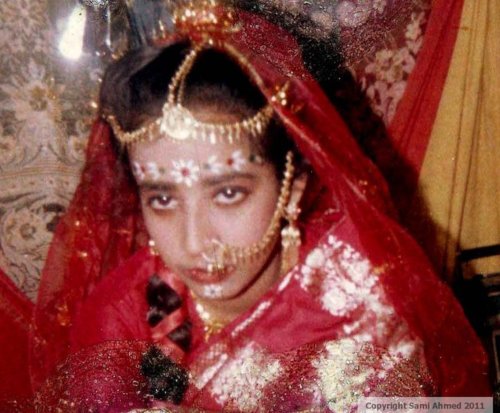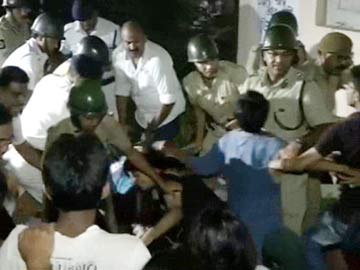My grandfather had a sister, a saga behen (own
sister) as we say in India. Nothing unusual in that except that there has been
no trace of her existence within the family in decades. That she had even existed in what is now called Bangladesh was just a chance discovery.
In the Indian sub-continent, historically, Bengal has been the hotbed of socio-cultural activism. During the colonial era, Bengali Babus were the anglophiles that, at first, the British colonizers relied heavily on to consolidate their position in the region. But then, with Western ‘education’ and their subsequent political awakening, the Bengalis transformed to thorns in their flesh.
To contain Bengal, the then representative of the Crown,
Lord Conwalis I think it was, mooted its first partitioning circa 1911. The
banks of the River Ganges that flows through the state became the East and West
Bengals. Locally they were called apaar Bangla (Bengal on
this bank of the river) and opaar Bangla (Bengal on that bank of
the river). In the vivisection of India in 1947, East Bengal was made a province of the newly carved out nation, was renamed East Pakistan. Then, in 1971, with help from across the river to stop the genocide, it
became an independent nation, Bangladesh. But the local reference continues to be apaar
Bangla and opaar Bangla.
They spoke less about the horrors inflicted on its people, though the effects of that experience runs deep in remembrances of the oppressiveness of the colonial rule, the famine the foreign powers engineered, the freedom struggle that the young men joined into and were killed for, the sudden rise of communalism that put friends into opposing camps, the riots following the forcible partitioning of the nation that caused the river to run red… My father never got over the trauma or ever wanted to go back. Now, seventy years after she left her village as a bewildered teen, my mother has finally desired to revisit the paradise of stunning natural beauty.
Thinking of it as a pilgrimage, my objective became to
find somebody in Bangladesh who might recall those times and the location of
the villages my parents came from. At first, it appeared that possibly nobody
in the know had survived time. Well, I thought, we have the village
names, and perhaps they haven’t been changed too many times by successive
governments! But, truth is, I wasn’t too hopeful myself.
Then, the very extended family network came through
with a name and a contact number. He
was somebody’s relative, on a visit to Kolkata, and still lived in opaar
Bangla. It seemed a godsend, and I made contact immediately. When we met
face-to-face, the eager questions we asked one another were, and how are you
related to so-and-so or to such-and-such family?
We compared notes on our respective family trees. We
stared in surprise at our findings. We are blood relatives, the newfound
cousin I shall call Umesh declared at last. The sister of my
grandfather, apparently lost in the sands of time for two generations, turned
out to be his grandmother!
I was eager to hear her story. Her grandson, however,
couldn’t quite recall her name. Something-sundari was the best he could
come up with. In the traditional naming of the girl-child in those times,
appends like Sundari, meaning beautiful, or Bala meaning
ornament, was regular. I suppose they were meant to enhance their chances in
the marriage market, where child-marriage was prevalent then.
Anyway, the story of this Sundari is the story of three
families of my father’s village inter-linked by marriage. Let’s call them X, Y
and Z. My paternal grandfather belonged to family Z. At the turn of the
twentieth century, the patriarch of family X was a renowned practitioner of
ayurvedic medicine. A young man of family Y had become his apprentice and
proved himself ably to his mentor. He was welcomed into the fold of
practitioners of traditional medicine and thereafter married a young woman of
the family, obviously with the patriarch’s blessing. His wife produced two
children, but she did not survive too long after. He couldn’t be
expected to rear the children on his own, and hence another marriage was on the
cards.
Family Z had three boys and one girl of the same
generation. The youngest of the three sons, my grandfather, had also married a
daughter of family X. Meanwhile, the young man of family Y set his sights this
time on the girl of family Z. This was Sundari! It seems they married, although
family Z kept no record of it.
Sundari stayed back with her husband and children when two of her brothers left for the other bank of the river with the rest of the family members. Her eldest brother also remained to dispose of the family property, but then was found dead under suspicious circumstances. The second brother also died soon after, and it was left to the youngest brother, my grandfather, to anchor the relocation of this large extended family. It all seems pretty curious, and so many questions arise, especially about the constraints imposed on little girls in that age!
I hear that she bore three sons and two daughters,
survived childbirth and lived to a ripe old age. So there was nothing wrong with her physiologically. Was
she indeed as beautiful as her name suggests or was loyalty her strength? Was
she happy with her lot as wife, mother and grandmother, or was it an imprisonment of sorts? Did she accept her
family’s indifference to her plight stoically or was she heartbroken at being
so completely forgotten? She died some time ago, and hence unfortunately, there is
no way of knowing her side of the story, except as her descendants retell.
The separation of family members is probably the natural fallout of the partitioning of any nation, but still why forget a person altogether, an only daughter of the family at that? There is no one to provide the answers, and today, I can only speculate whether Sundari’s life has been the stuff of fairytales or as tragic as those times.
The separation of family members is probably the natural fallout of the partitioning of any nation, but still why forget a person altogether, an only daughter of the family at that? There is no one to provide the answers, and today, I can only speculate whether Sundari’s life has been the stuff of fairytales or as tragic as those times.









